The EOS M50 mark II may not be the latest model, nor does it have the most impressive specs by today’s standards, but it is one of Canon’s most popular cameras in the EOS M series, and is still selling well to this day.
The R10, launched alongside the R7, becomes the first APS-C product in the Canon RF mirrorless series (EOS R). It gives Canon’s APS-C format a breath of fresh air, with faster performance, better video and more advanced features than what we’ve seen previously from the EOS M system.
Here is how the two products compare.
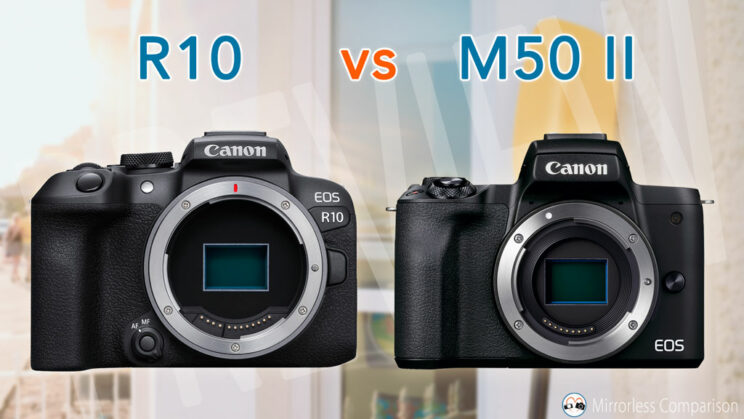
Ethics statement: the following is based on official specs and our personal experience with the M50 II. We were not asked to write anything about this product, nor were we provided any compensation of any kind. Within the article, there are affiliate links. If you buy something after clicking one of these links, we will receive a small commission. To know more about our ethics, you can visit our full disclosure page. Thank you!
1. Autofocus
The R10 is a more recent model, and as such, it brings some of the latest technology Canon has to offer. In fact, the camera shares very similar specs with the flagship R3: Dual Pixel CMOS AF II (Canon’s advanced phase detection system) and a variety of subject detection modes for humans, animals and vehicles.

The M50 II features an older version of the same AF system, and the software is less advanced. It can detect the face and eyes of humans, and track them inside the frame (at an inferior level), but that’s where the advanced capabilities end.

Another difference is the maximum number of AF areas you can use. In Single point mode, the R10 has 4,503 points versus 3,975 on the M50. When using the Tracking mode, those numbers drop significantly, but the R10 still retains a higher number: 651 points versus 143 points.
Then, we have the sensitivity in low light, where the difference is less relevant: -4EV for the R10, measured with a F1.2 lens, and -4EV for the M50 but measured with a F1.4 lens, which means you have a difference of half a stop in favour of the EOS M camera.
The last point concerns video recording: in 4K mode, the M50 II only uses contrast detection autofocus, rather than the Dual Pixel CMOS AF. This reduces the performance dramatically: it is slower and far less reliable than the R10 when recording 4K video.
2. Shutter and Drive Speed
With the mechanical shutter, both cameras can take an exposure at a maximum of 1/4,000s. Switch to the electronic shutter, and the R10 can raise the speed to 1/16,000s.
The M50 doesn’t share the same capability, and the electronic shutter (which also allows you to shoot in silent mode) is only available via the Special Scene mode.
Moving on to continuous shooting speed, the R10 is superior as well: it can do 15fps with the mechanical shutter, or 23fps with the electronic shutter. These values work with AF and AE tracking.

The M50 II is slower: 10fps when working with One-Shot AF (single AF), or 7.4fps with Servo AF (continuous). Switching to the electronic shutter makes no difference.
Unsurprisingly, the buffer capabilities are better on the new model thanks to the compatibility with SD UHS-II cards, as you can see from the table below.
R10
M50 II
10fps
–
36 JPG
10 RAW
15fps
460 JPG
29 RAW
–
23fps
70 JPG
21 RAW
–
3. Video
Both cameras are capable of recording 4K video, but there are important differences to be aware of.
First, the frame rate. The R10 can go up to 60p, whereas the M50 II only does 24p and 25p.
Second, we need to talk about sensor crop. The R10 can record 4K up to 30p with the full width of the sensor, so without cropping and with oversampling, which means it utilises all the pixels to give you the best quality possible. If you want 50/60p however, there is a severe 1.6x crop.

The M50 always crops in 4K by 1.5x, so if you want the high resolution for video, your field of view will always be affected. As already stated earlier, the M50 doesn’t work with phase detection AF when recording 4K, which is another important limitation.
In Full HD, there is no sensor crop on either camera, but the R10 can record up to 120p (with the High Speed mode), whereas the M50 stops at 60p. To get 120 frames per second on the M model, you need to select the 720p resolution.
Third, we have video quality: the R10 can record 10-bit 4:2:2 internally with the HDR PQ profile (H.265 codec), which means it saves more colour information in comparison to the M50 (8-bit 4:2:0).
Fourth, Canon says the R10 can record in 4K continuously for approximately 50 minutes (at a room temperature of 23˚C). The M50 has the 30 minute / clip limitation.
Finally, concerning audio, both cameras have a microphone input but no headphone output. With the R10, you can also use a compatible digital audio microphone on the multi-function accessory shoe.

4. Sensor
The two cameras share the same format (APS-C) and an almost identical resolution on the sensor: 24.2MP for the R10 and 24.1MP for the M50 II.
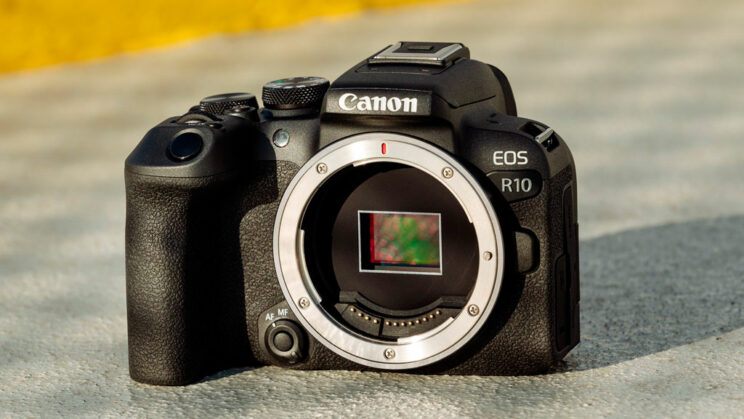
The ISO range is almost identical too:
Normal range
Extended range
R10
100 – 32,000
100 – 51,200
M50 II
100 – 25,600
100 – 51,200
Note that in video mode, the R10 range goes up 12,800, or 25,600 with the extended range.
For the M50 II, it’s 6,400 ISO maximum in 4K, and 12,800 max in 1080p.
According to Canon, the sensor on the R10 is a new version with upgraded micro lenses and circuitry to improve quality and performance. Also note that the R10 has a faster image processor, which explains the superior speed it can offer.
5. Design
The R10 is larger and a bit heavier.
- R10: 122.5 x 87.8 x 83.4mm, 429g
- M50 II: 116.3 x 88.1 x 58.7mm, 387g
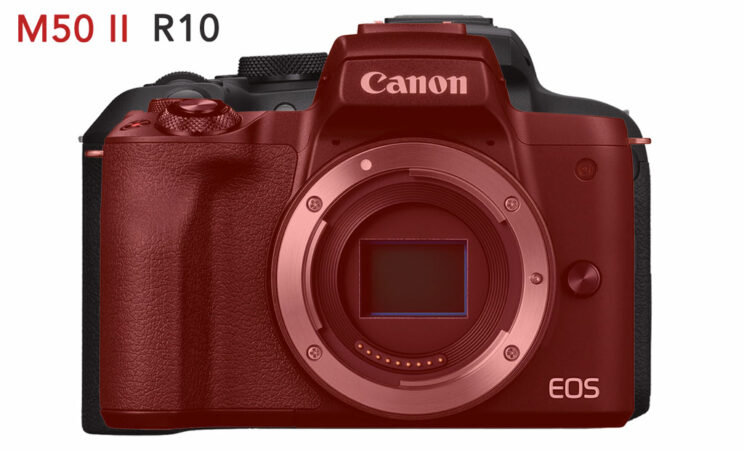
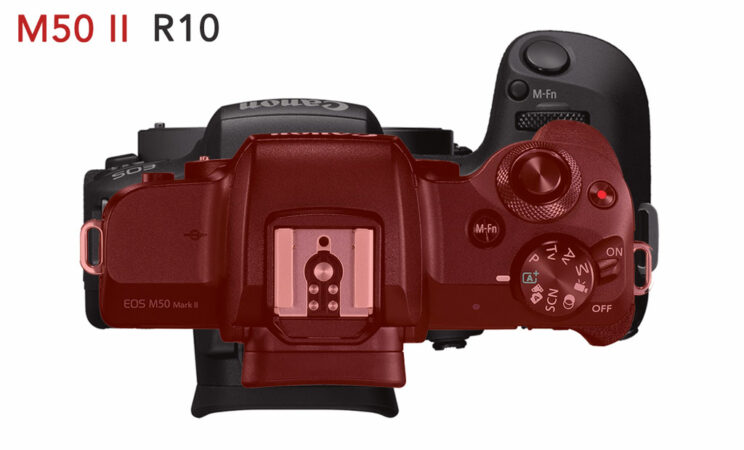
The R10 offers more physical controls, notably the AF/MF switch at the front, the AF joystick at the rear, and an extra dial on top to change the exposure more easily.
Both can take only 1 SD card, but the R10 is compatible with the faster UHS-II type.
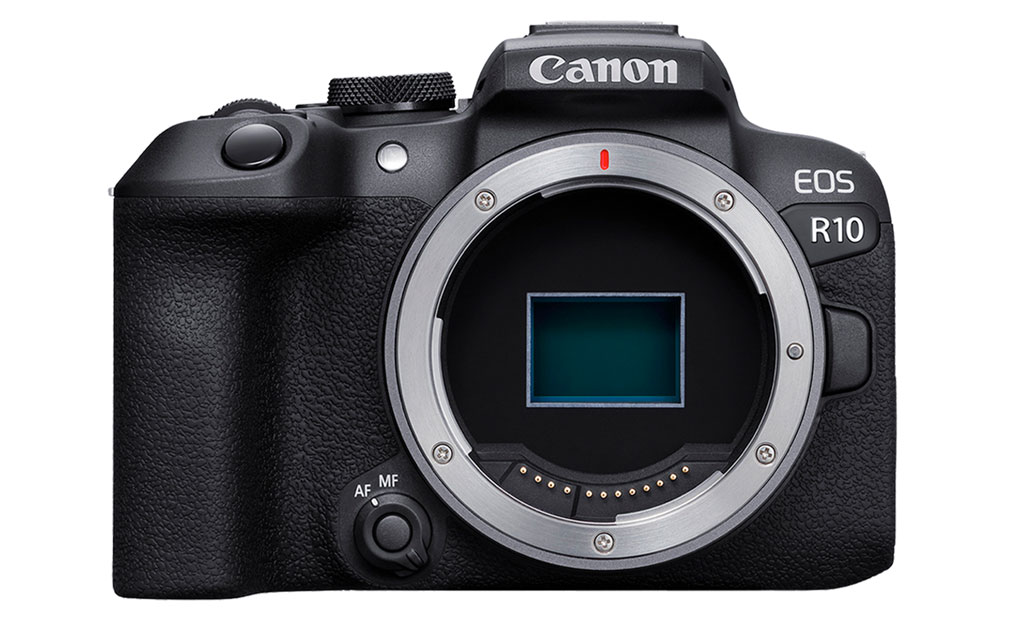
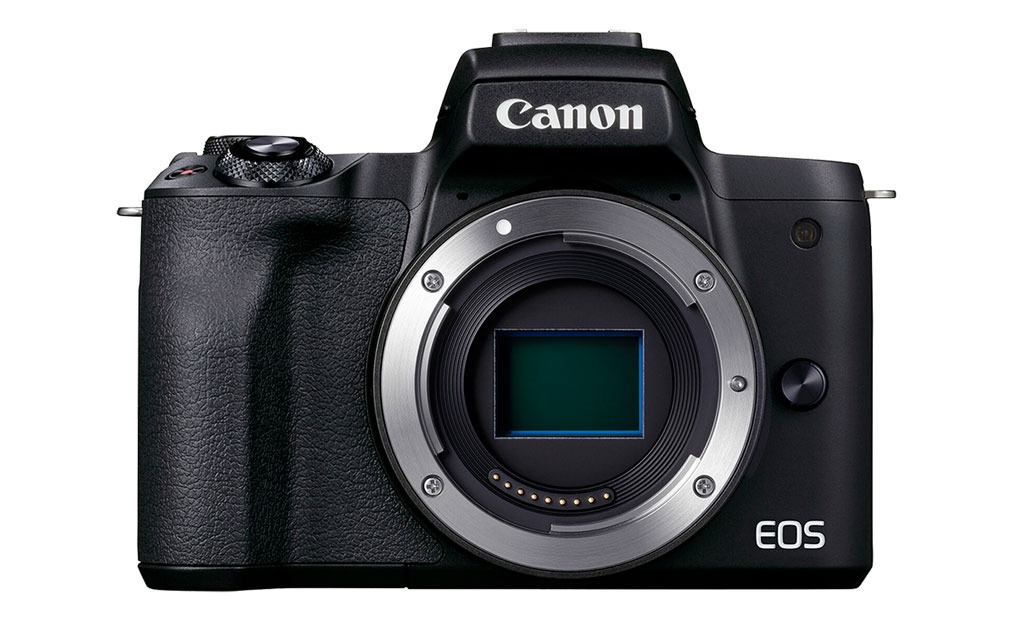
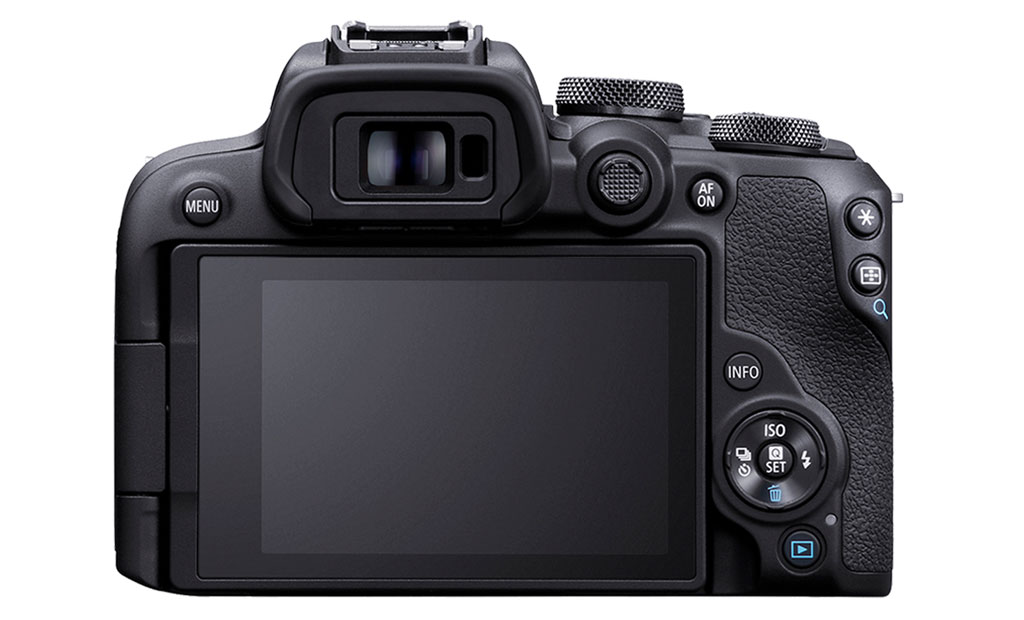
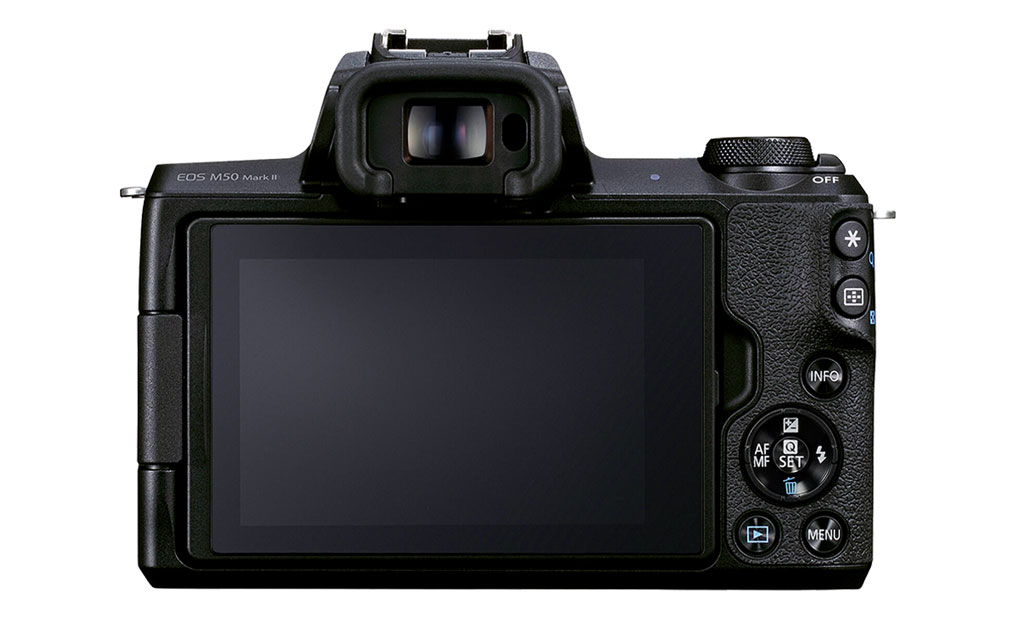
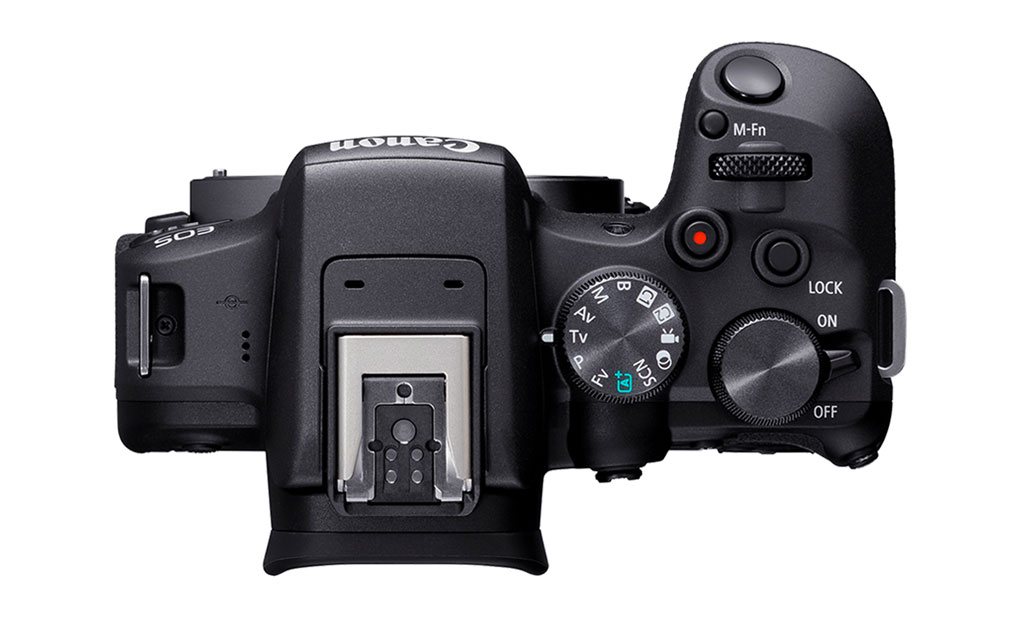
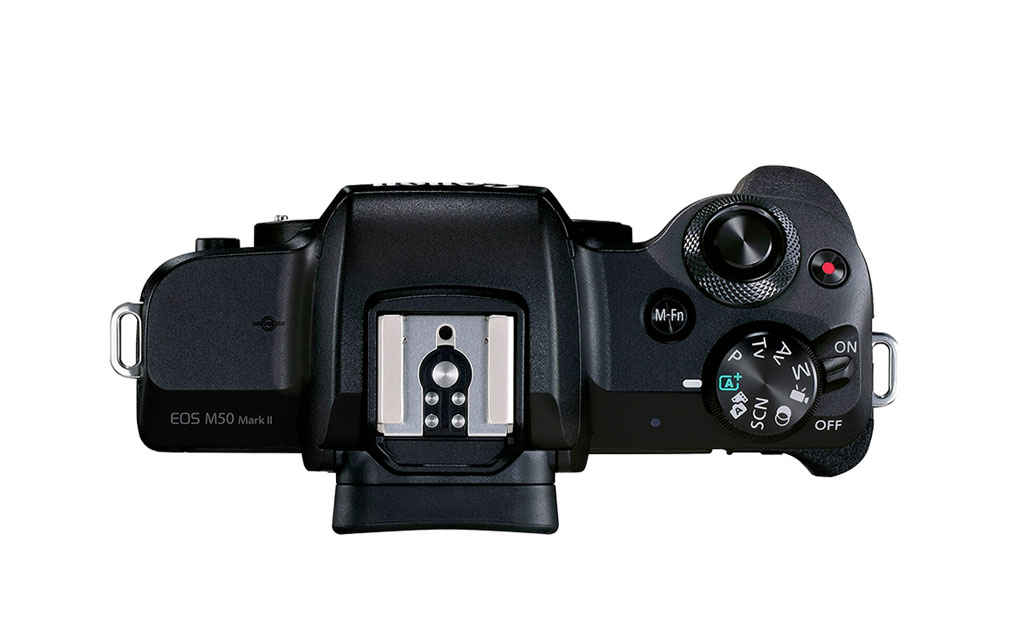
6. Viewfinder and LCD monitor
Here the specs are very similar. Both cameras use a 0.39-in OLED viewfinder with 2.36M dots of resolution and a 22mm eyepoint.
Surprinsingly, the M50 II has a higher magniciation (0.62x vs 0.59x), but the R10 EVF has a faster refresh rate of 120Hz (when the Smooth setting is selected).
The rear monitor is the same: touch sensitive LCD with 1.04M dots.
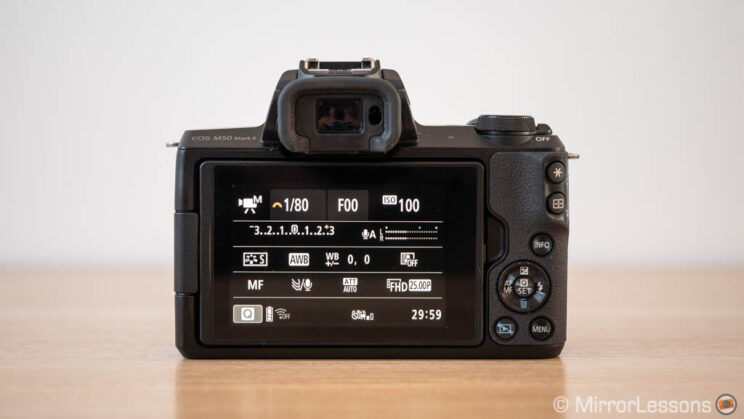
7. Extra Features
The R10, being the later model, has a few extra functions to offer.
It can record 10-bit HEIF photos, using the HDR PQ gamma, which offers more colour information than 8-bit JPGs. Keep in mind that not every photo editor software is compatible with this type of file.
Then we have focus bracketing and focus stacking (in-camera), a pair of features that will certainly be of interest to macro photographers.
Finally, there is a Pre-Shooting mode, where the camera can save a series of frames before the shutter button is fully pressed. This is very useful to capture fast action that is difficult to anticipate.
8. Battery
The cameras use different batteries, and have a different rating.
The R10 comes with the LP-E17, which can hold 430 frames with the LCD or 260 frames with the EVF.
The M50 II uses the older LP-E12, with a performance of 305 (LCD) or 250 photos. (EVF).
Additionally, the R10 can be charged via USB.
9. Price
The R10 can be found for $980 / £900 / €1030.
The M50 II is less expensive and can be purchased for $600 / £590 / €610.
Note: prices are of the body only and as of August 2022, excluding temporary rebates.
10. Lens mount: very important!
This last chapter is a bit long but it’s important to read because I talk about the most crucial difference between these two cameras: the lens mount.
The R10 uses the newer and more sofisticated RF-mount, whereas the M50 II features the older EF-M mount. This means there is a different set of lenses you can use with each camera, and they cannot be interchanged.
In simpler terms, lenses designed for the R10 are NOT compatible with the M50 II and vice versa.
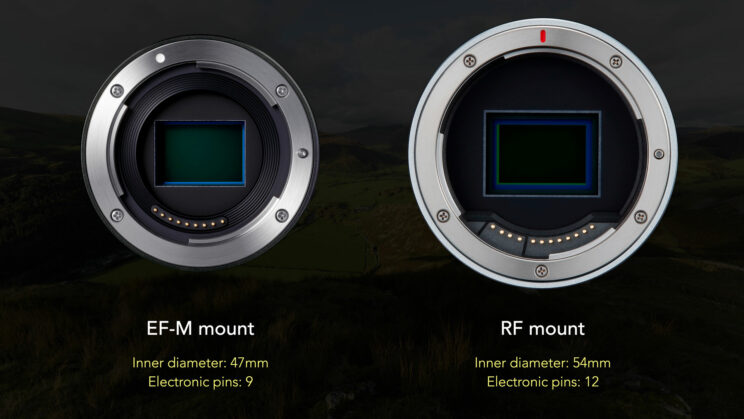
If you don’t know much about Canon’s venture into the mirrorless camera market, you may wonder why the company designed two different APS-C systems in the first place. To answer that, we need to rewind the clocks a little.
In 2012, mirrorless cameras (or compact system cameras as they were often called back then) were starting to become popular, but they were still in an early stage of development. They featured a lot of new technology, but were not at the same level as DSLRs when it came to critical performance (autofocus especially) or lens choice. This is why many photographers did not take them seriously, mainly regarding them as a compact solution for the holidays.
Still, the mirrorless market was growing enough to attract the interest of all the camera brands: Sony, Fujifilm, Nikon, Olympus and Panasonic were already invested in it, and Canon didn’t want to pass on the opportunity.
So that year in July, the company unveiled the EOS M, which followed the same marketing trend: a small and compact system with its lightweight build being the main selling point. In the following years, it released more models and built a modest set of 8 lenses (fortunately expanded by third-party manufacturers).

But mirrorless products evolved quickly. Soon, they became more than just cute and tiny cameras. More advanced and professional features made their way onto more robust bodies. The gap in performance with DSLRs started to vanish. It became quite clear that mirrorless was the future.
So Canon found itself with a challenge: build on what it already had, or build something from scratch. It chose the latter. I suppose the core specifications of the EOS M series weren’t ambitious enough, so the engineers designed a new system that could satisfy amateurs and professional alike. Instead of continuing with the EF-M mount, they unveiled the RF-mount, which was larger with more electronic pins to improve body-to-lens communication, among other things.
Launched in 2018, the original EOS R full frame model was followed by the entry level RP, the advanced R5 and R6, before reaching the flagship R3. The number of lenses produced for the new system gives you an idea of the broader ambition: there is currently a total of 29 RF lenses at the time of publishing this article (with more in the pipeline), versus 8 EF-M lenses produced in 10 years.
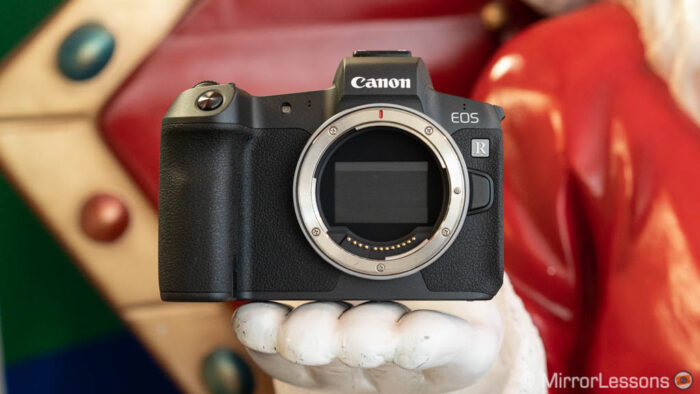
Very quickly, it became clear that the RF series would be the future of Canon’s commitment to interchangeable-lens cameras, and it was only a matter of time before the company would expand the system with APS-C models, just like it did for a long time with DSLRs. One system, two sensor formats, same mount: it’s a solution that offers a lot more flexibility.
You’re probably thinking at this point that the EOS M system’s days are numbered, but to be honest, it’s not as black and white as this. It is true that often, corporations let a product die slowly and quietly, rather than giving us a clear statement about its demise. But the EOS M series is selling well as far as I can tell, and it remains a more compact solution than the EOS R system. So I can see Canon wanting to keep it alive for now.
What I don’t expect for the EOS M system are major new releases, like new lenses or new cameras in the coming years. I think Canon will continue to sell what they already have for as long as they can, but all efforts towards new products will be reserved for the RF system.
Canon R10 vs M50
If you’re curious to know the differences between the R10 and the original M50, know that they are very similar to what I described above.
The M50 II is a small upgrade in comparison to its predecessor, and you can read all about it in our separate M50 vs M50 II article.
Conclusion
If you’ve read the article from start to finish, it’s pretty easy to see the R10 is the winner: it is faster, offers more features, has less handicapped video performance and is part of a lens eco-system that, in addition to being wider, has a brighter future ahead.
Personally, I would consider the R10 the better investment, especially if further on in your photography journey, you want to add more lenses, or even a full frame Canon camera to your bag.
With that said, the M50 II retains a few advantages, especially if you look at the price: it is smaller and less expensive. It may not have the greatest specs, but it is capable of producing fine images. Personally, I like it a lot in combination with the 22mm F2 lens. It’s a very compact solution and I’m never disappointed when I photograph my son while he’s playing. If that sounds enough for you, then the M50 II might be all you need.
For anything more ambitious, or if your main interest is video, the R10 is without a doubt the better choice.
Reminder: the links below are affiliate links. If you decided to buy something after clicking the link, we will receive a small commission.
Check price of the Canon R10 on
Amazon | B&H Photo
Check price of the Canon EOS M50 II on
Amazon | Amazon UK | B&H Photo | eBay
